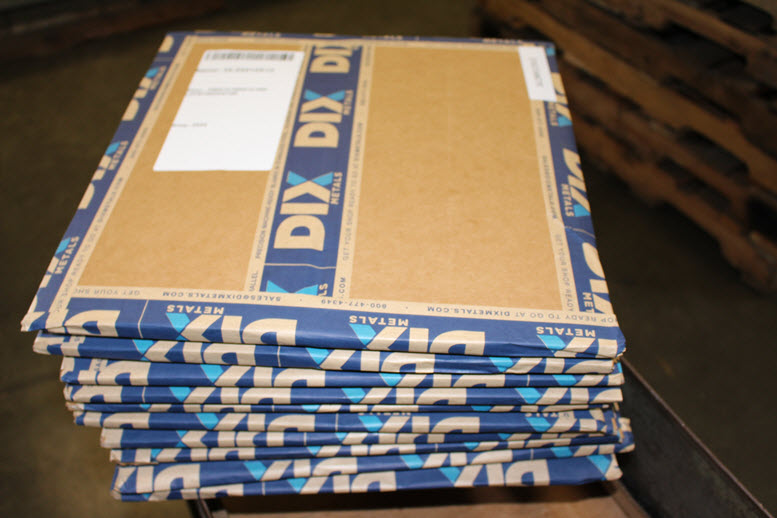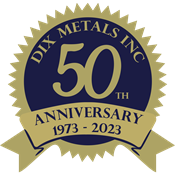Stainless Steel Plate FAQs

Below you will find some of the questions more frequently asked by customers regarding stainless steel plates. Browse through and see if any of them answer a question you may have. You may also call us at 800-477-4349.
- Why is stainless steel plate such a popular manufacturing material?
- What grades of stainless steel plate does Dix Metals carry?
- Does Dix Metals offer waterjet cutting of stainless steel plate?
- What are the specific differences between 304 and 316 stainless steel?
- Is stainless steel magnetic?
- Is stainless steel suitable for welding?
- What about hardening stainless steel – can this be done?
- What does an “L” signify in a stainless steel grade?
- Is stainless steel a recyclable material?
- Does stainless steel perform well in temperature extremes?
- What kind of machine finishing can you do on stainless steel?
- How can I get more information?
Q: Why is stainless steel plate such a popular manufacturing material?
A: There are numerous reasons manufacturers come to Dix Metals for stainless steel plate. The corrosion resistance of stainless steel is excellent. When combined with other benefits—ease of fabrication, strength-to-weight advantage, aesthetic appearance, easy cleaning ability, impact and heat resistance – stainless steel plate becomes the material of choice for a variety of applications.
Q: What grades of stainless steel plate does Dix Metals carry?
A:
- 303
- 304
- 304L
- 316/316L
Q: Does Dix Metals offer waterjet cutting of stainless steel plate?
A: Yes. Dix Metals waterjet machines offer you a number of benefits. First, the ability to maximize material usage through tight nesting lowers the cost per part while saving valuable natural resources. Additionally, you save time by hiring us to prepare precision, machine-ready blanks, enabling you to manufacture parts quickly, with little preparation time required. Dix Metals delivers blanks according to your exact specifications, reducing time, labor and cost.
Q: What are the specific differences between 304 and 316 stainless steel?
A: Specific differences pertain to the makeup of the material. 316 contains 16% chromium, 10% nickel and 2% molybdenum. 304 contains 18% chromium and 8% nickel. Molybdenum adds corrosion resistance to substances such as salt found in highway de-icing salts and ocean water.
Q: Is stainless steel magnetic?
A: Yes and no. 300 series stainless steel contains nickel and does not have magnetic properties. 400 series stainless steel, which does not contain nickel, is magnetic.
Q: Is stainless steel suitable for welding?
A: Many of our customers weld with stainless steel. However, welding stainless steel varies from welding carbon steel, since "filler" rod or electrode must be of the same material (stainless steel).
Q: What about hardening stainless steel – can this be done?
A: It is possible to harden 300 series stainless steel. This can be done by cold-working the metal, cold-rolling down to lighter gauges, or by other size-altering means. Talk to us about your specific needs.
Q: What does an “L” signify in a stainless steel grade?
A: This pertains to carbon content. For example, the use of the letter L in the grade number 317L means that the carbon content does not exceed 0.03%. Lower carbon level stainless steel is often used in welding applications.
Q: Is stainless steel a recyclable material?
A: Dix Metals recycles thousands of pounds of stainless steel scrap every year – stainless is 100% recyclable, since it can be re-melted for new product.
Q: Does stainless steel perform well in temperature extremes?
A: Stainless steel performs well in hot and cold temperatures. It may be used in applications with high heat of up to 1,800 degrees, as well as extreme cold, such as liquid nitrogen transport.
Q: What kind of machine finishing can you do on stainless steel?
A: Dix Metals can machine finish your stainless steel project with a coarse or fine grain, or bring it up to a high luster, mirror-like finish.
Q: How can I get more information?
A: Contact us at 800-477-4349.
Click here to Request a Quote or call us at 800-477-4349





